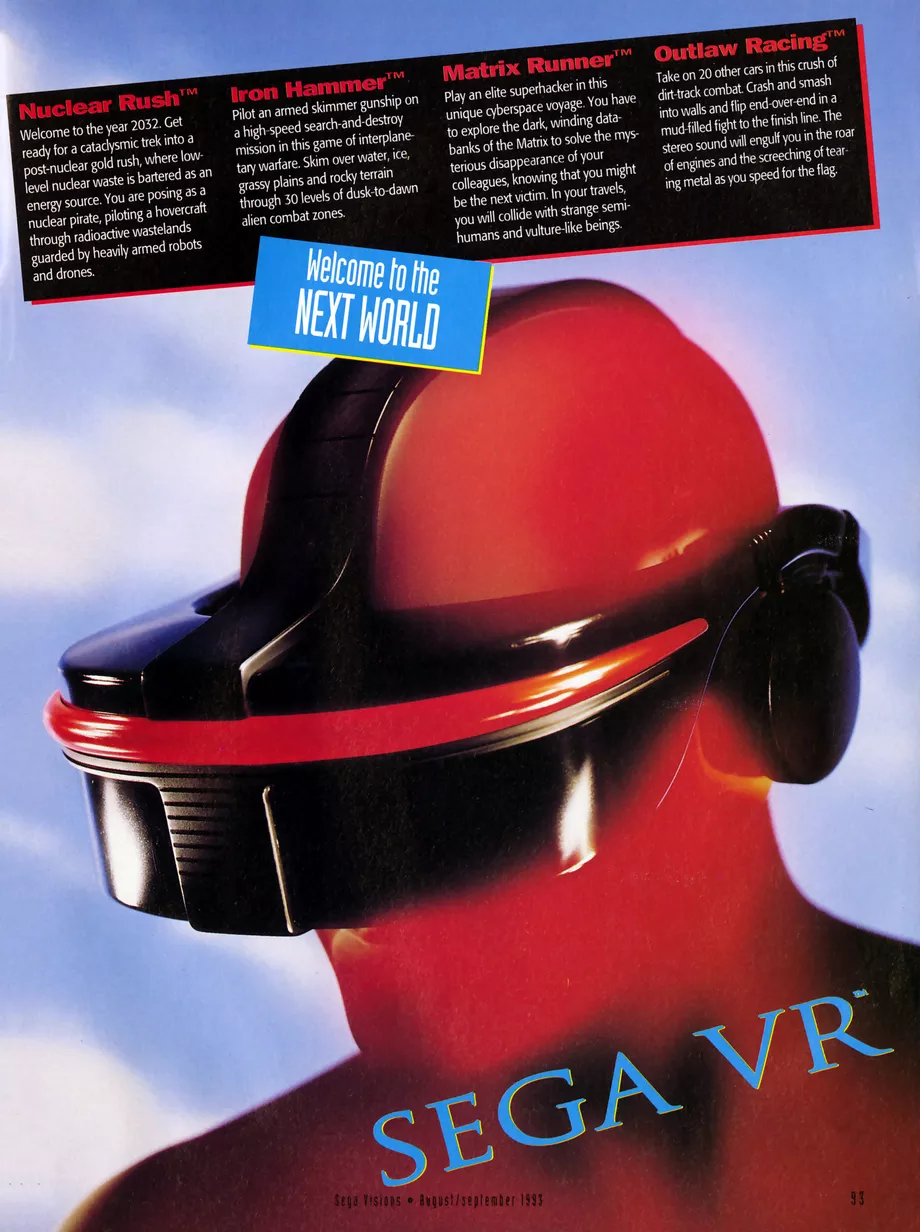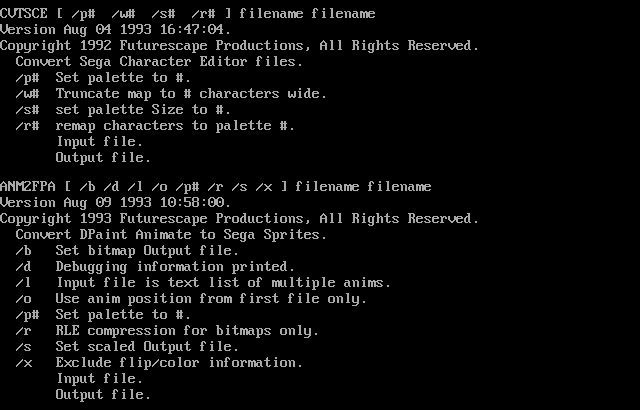
3D video glasses are far from a new century idea, they were repeatedly invented , revived the idea and reinvented again. Sega was one of the 20th century tech companies looking to bring virtual reality to the masses.
In September 1993, she introduced the Sega Genesis VR, a 3D helmet that allowed for 3D games. The glasses were very similar in principle to modern ones - two LCD displays instead of lenses, connection to the "picture" source, three-dimensionality. All of this promised a revolution in the world of video games back in 1993. But, unfortunately, it did not take place - the release of Sega VR was canceled, and after six months no one remembered the device. But, as it turned out, then a game for 3D glasses from Sega was developed, which became known only now, a quarter of a century later. And yes, I managed to play it!
And I also managed to find a video from the Sega VR presentation - right from 1993.
What were Sega VR glasses?
For the first time it became known about them in 1991. The company announced that for $ 200, gamers around the world will be able to get a device for playing volumetric content. The resolution of the LCD screens of the lenses was 300 * 200 pixels, the device also had headphones for stereo sound and a head tracking system. This technology, by the way, was developed by Ono-Sendai, here you can study the patent .
The sensors updated the head position 100 times per second, so the tracking was accurate. The design of the video glasses was developed in accordance with the idea from the 1951 film "The Day the Earth Stood Still" with devices from "Star Trek" and "Robocop".
Then the company promised to release four games at once at the start, and even showed the gameplay. But then something went wrong. After the announcement at CES-1993, the device was never released. As far as we know, few people were impressed by the device, and 40% of testers were swayed by three-dimensionality - no one was ready for it. As a result, after assessing the risks, Sega decided to close the project.
The official statement said the following: "The players got used to virtual reality so much that they could injure themselves while moving in a normal reality." In general, this is quite true - just watch one of the thousands of YouTube videos showing people wearing 3D glasses for the first time. But now the threat of players tripping or hitting furniture while in 3D reality is no longer intimidating to any manufacturer. Users are warned - that's all.

Well, now about the main find - a game that is more than 25 years old
One of the digital archaeologists, Dylan Mansfield, learned from an ex-developer from the Sega VR team about the existence of a game called Nuclear Rush (spoiler - the action takes place in 2032, electricity is in short supply, there are almost no fossil fuels left. You are a pilot and your mission - get nuclear fuel).
The game's source code ended up on a 26-year-old CD, along with tools from the Sega team. These tools were used to create games, so this find made the task of restoring Nuclear Rush a lot easier.
Nevertheless, in the process of restoration, digital archaeologists faced a considerable number of problems that they still managed to solve.
The main problem is compiling the source code. “When you first get an unknown source code, you have to understand how the creators compiled the development. You don't always have the tools you need, ”said Rich Whitehouse, author of the game restoration project.
He was lucky - the source code of the game contains a lot of clues about what certain parts of the code are responsible for and how the interaction with Sega VR video glasses is implemented. Well, since it is known what should be happening, then all this can be tried to be implemented on modern video glasses.
The authors of the project were also lucky that the mentioned CD contained the code of another game, Monster Hunter (this is not Capcom), with detailed comments on working with video glasses. From there, we also managed to glean a lot of useful information. All this data, together with the tools of the developers of 1993, made it possible to restore the game and adapt it to modern devices - namely, the HTC Vive VR. By the way, fps for a game from Sega is about 15 frames per second. For modern games, this figure is 100 fps.
Some technical details
Most of the Nuclear Rush code is written in C. It is compiled with the Sierra 68000 C compiler .
In addition, compilation requires a few more proprietary tools that allow you to add textures and other game content.

During the first build attempt, it turned out that one of the tools, DUMP.EXE, was missing. After investigating the problem, it turned out that this program was opening a file and sending text to standard output for each byte so that the binary could be accepted by the assembler. The author of the project was able to write a similar program in Borland C ++ 3.0 and everything compiled successfully.
As a result, a COFF file was generated, with the important parts of the ROM being split into several sections. As a result, the author had to write another program in Borland to parse COFF and assemble ROM into a single whole.
The game was launched, and the author saw this:

It is clear that the game did not see the 3D device and could not see it. Therefore, I had to add a couple of lines in order to skip the check: As soon as all this was done, the author of the project finally saw the game itself.
wptr++; /* Skip number of sprites in frame */
wptr++; /* Skip hotspot offset */
wptr++;
wptr++;

Well, then the author spent a lot of time debugging, solving major and minor problems, in addition, he had to "teach" the game to detect modern 3D glasses instead of the missing Sega VR accessory. The author reveals these fascinating details here .
How to play
Most importantly, yes. Anyone can play, for this you need:
Sega VR emulator:
Repository
Ready emulator (Windows)
And then - the game:
Repository
The game itself (ROM for loading into the emulator).
